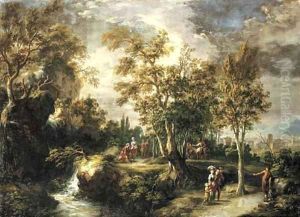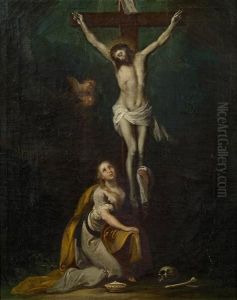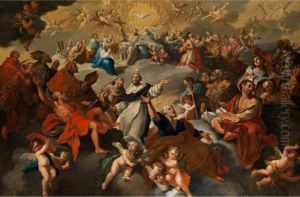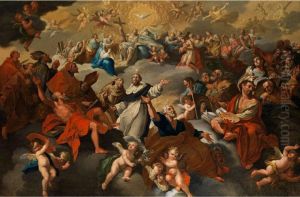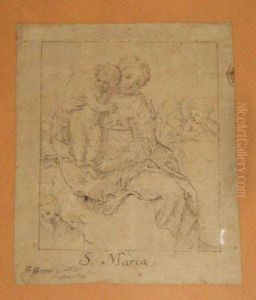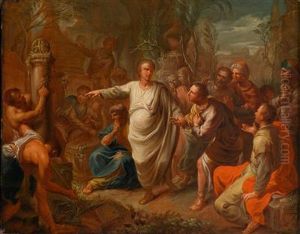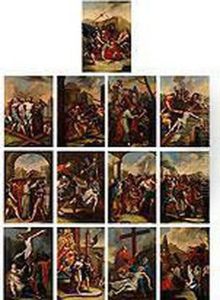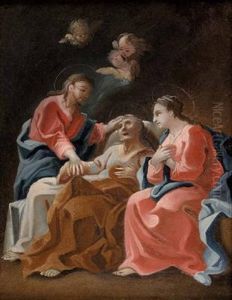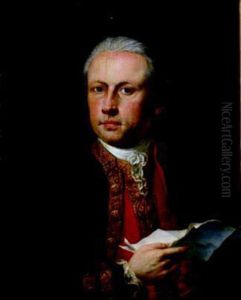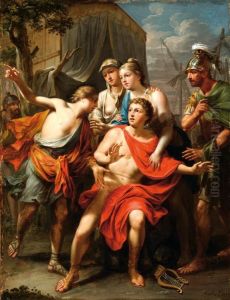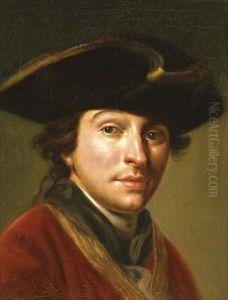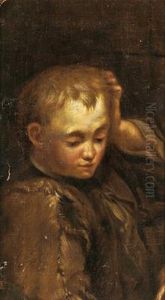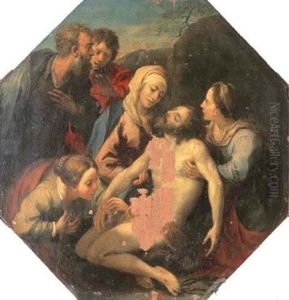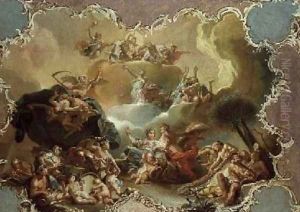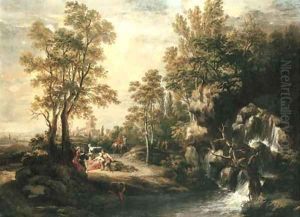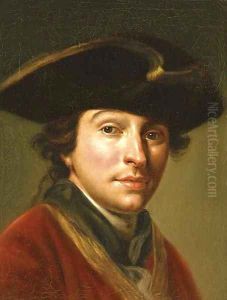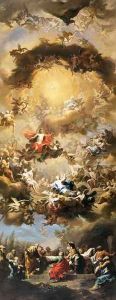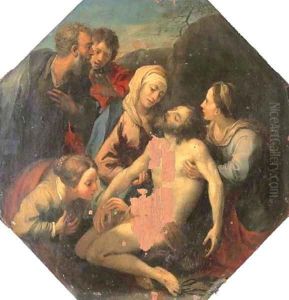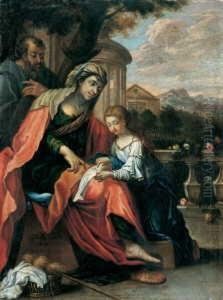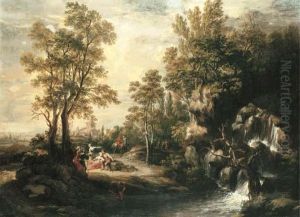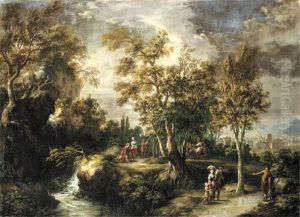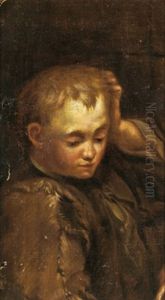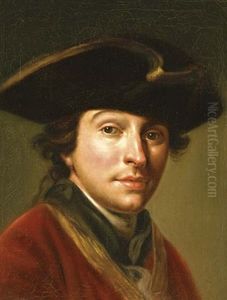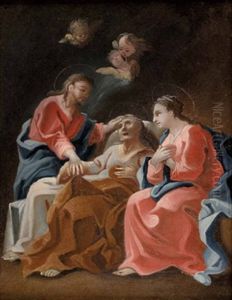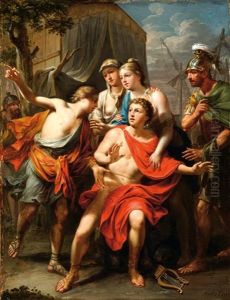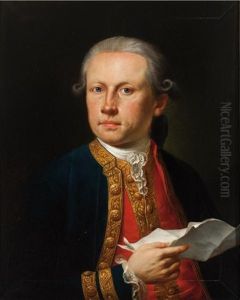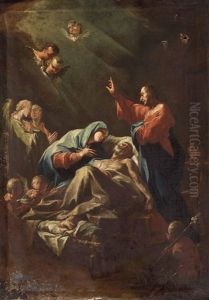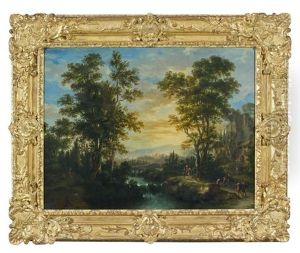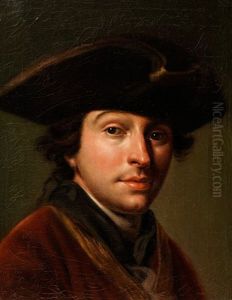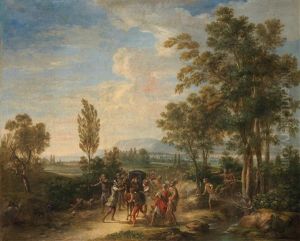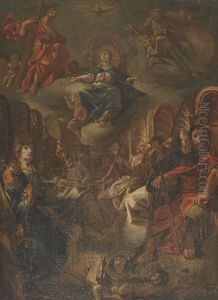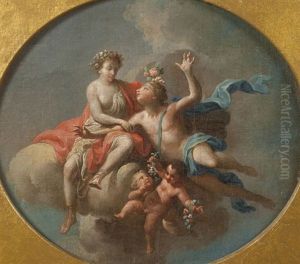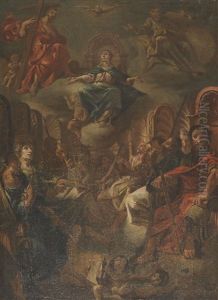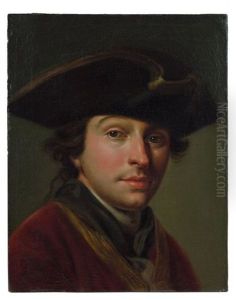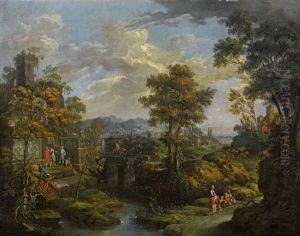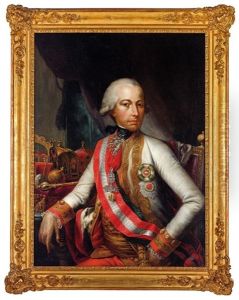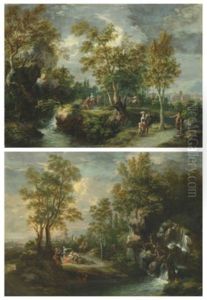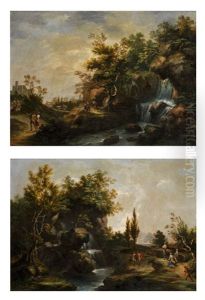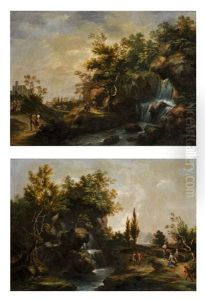Martin Knoller Paintings
Martin Knoller was an 18th-century Austrian painter who gained prominence for his frescoes in a style that combined elements of the late Baroque and early Neoclassicism. Born on November 18, 1725, in Steinach am Brenner, Tyrol, he was initially trained by his father, who was a minor painter. He later studied under Paul Troger at the Academy of Fine Arts Vienna, where he honed his skills in the Baroque tradition.
After his early education, Knoller traveled to Italy, which was a common practice for artists seeking to advance their careers. He became a student at the Accademia di San Luca in Rome, and it was during this period that he was significantly influenced by the works of classical antiquity and the Italian Renaissance, as well as by the emerging Neoclassical style.
Knoller's work is characterized by his ability to blend the grandeur and dynamism of Baroque art with the clarity and calm rationalism of Neoclassicism. He became particularly noted for his frescoes in churches, palaces, and public buildings. Among his most famous works are the ceilings of the church of San Lorenzo in Damaso, Rome, and the frescoes in the Steinach parish church.
In 1775, Knoller was appointed court painter to the Archbishopric of Milan, a position that further solidified his reputation. His style continued to evolve, and he produced numerous altarpieces and portraits, as well as mythological and historical paintings. Knoller's success in Milan led to commissions from other parts of Italy and beyond, including the Habsburg territories.
Throughout his career, Knoller was recognized with various honors and memberships in artistic academies. He was highly regarded not only for his artistic talents but also for his contributions to the development of Neoclassicism in the German-speaking regions.
Martin Knoller died on July 24, 1804, in Milan. His legacy is preserved through the many frescoes and paintings that adorn the walls and ceilings of European buildings, reflecting the transitional period of European art from the ornate Baroque to the more disciplined Neoclassical style.
